How to Grow Calamansi
- April 3, 2024
- 0 comment
Calamansi, also known as calamondin or Philippine lime, is a citrus fruit native to the Philippines. This small, round, and green-to-orange fruit is beloved for its sweet and tangy flavor, making it a popular ingredient in various culinary and beverage recipes. Growing calamansi can be a rewarding experience for gardeners of all skill levels. In this article, we’ll guide you through the process of growing, caring for, and harvesting calamansi.
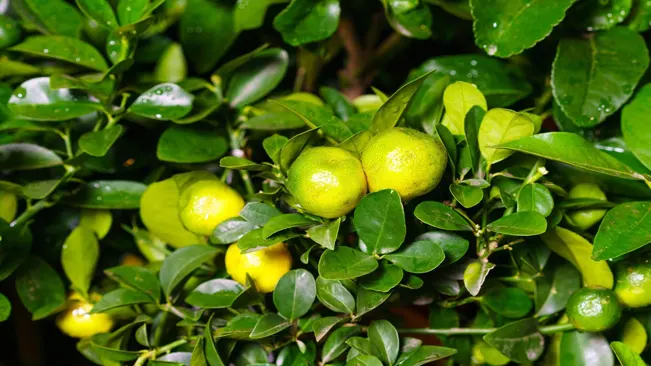
Health Benefits of Calamansi
| Benefit | Description |
|---|---|
| High in Vitamin C | Calamansi is a rich source of Vitamin C, essential for immune system support and skin health. |
| Antioxidant Properties | Contains antioxidants which help fight free radicals, reducing the risk of chronic diseases. |
| Enhances Iron Absorption | The citric acid in calamansi can increase the body’s ability to absorb iron from plant-based foods. |
| Aids in Weight Loss | The fruit’s acidity can boost metabolism, aiding in weight management when paired with a healthy diet. |
| Skin Care Benefits | When applied topically, calamansi juice can brighten skin and help reduce acne. |
| Improves Digestive Health | The fiber and acidity in calamansi can aid in digestion and relieve constipation. |
| Reduces Bad Breath | The citric acid in calamansi can kill bacteria in the mouth, helping to freshen breath. |
| Alkalizing Effect on the Body | Despite its acidity, calamansi can have an alkalizing effect on the body, helping to balance pH levels. |
| Lowers Cholesterol | Some studies suggest that calamansi juice can help lower cholesterol levels. |
| Soothes Sore Throat | Drinking warm water with calamansi juice can provide relief from a sore throat. |
List on How To Grow Calamansi
- Choosing a Planting Location
- Planting Calamansi
- Watering and Fertilization
- Pruning and Maintenance
- Harvesting Calamansi
- Uses and Benefits
Choosing a Planting Location
Sunlight Requirements
Calamansi trees are very much like other citrus plants in their need for abundant sunlight.
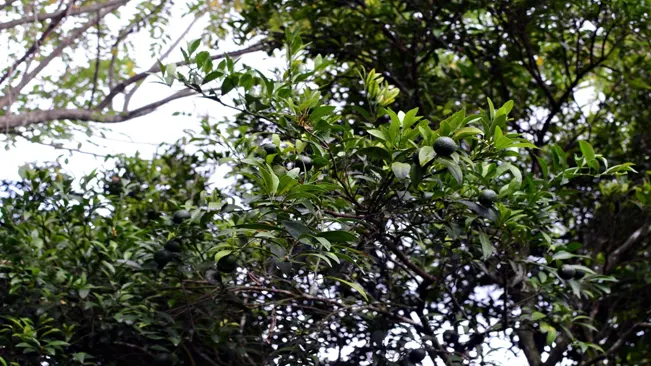
- Intensity and Duration: The 6 to 8 hours of direct sunlight are crucial for the tree’s growth and fruit production. This sunlight should ideally be uninterrupted and of high intensity, which is common in tropical and subtropical regions.
- Positioning: When selecting a location, south-facing spots are typically ideal, especially in the Northern Hemisphere, as they receive the most consistent sunlight throughout the day.
- Sunlight and Health: The ample sunlight helps in photosynthesis, leading to better growth, healthier foliage, and more bountiful and flavorful fruits. Insufficient sunlight can lead to poor flowering and fruiting.
Soil Conditions
The right soil conditions are imperative for the healthy growth of calamansi trees.
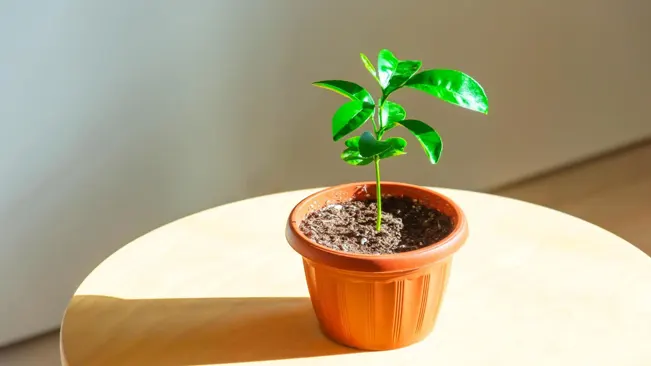
- Well-Draining Soil: Calamansi does not do well in waterlogged conditions. Excess water can lead to root rot and other diseases. Well-draining soil ensures that water doesn’t accumulate around the roots.
- Slight Acidity: Calamansi prefers a soil pH that is slightly acidic, ideally between 5.5 and 6.5. You can test your soil’s pH using a home testing kit.
- Improving Soil Quality:
- Organic Matter: Adding organic matter, such as compost or well-rotted manure, can improve soil structure, enhance its nutrient content, and help maintain the right pH.
- Sand: If your soil is heavy or clay-like, incorporating sand can improve drainage. However, it’s important not to overdo it, as too much sand can decrease the soil’s ability to retain nutrients and moisture.
- Container Growing: If you’re planting calamansi in a pot, choose a high-quality potting mix designed for citrus or similar plants. Ensure the pot has enough drainage holes.
Planting Calamansi
Starting from Seeds or Seedlings
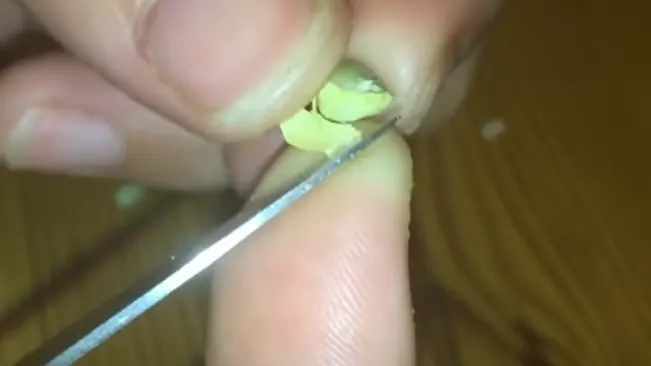
Seed Preparation and Germination
- Seed Extraction: If you’re starting from seeds, you should first extract them from ripe calamansi fruits. Clean the seeds and remove any pulp attached.
- Germination Process: Calamansi seeds can be germinated in a small pot or germination tray. Use a seed starting mix or a mixture of peat and perlite. Plant the seeds about half an inch deep, covering them lightly with soil.
- Moisture and Warmth: Keep the soil consistently moist but not soggy. Calamansi seeds require warmth to germinate, so placing the pot in a warm area or using a heat mat can be beneficial.
- Time to Germination: It can take several weeks for calamansi seeds to germinate. Be patient and keep the soil evenly moist during this period.
Using Seedlings
- Advantages: Starting with seedlings, which are young plants, speeds up the growing process. Seedlings are also more likely to be healthy and robust since they’re typically grown under controlled conditions in nurseries.
- Selecting Seedlings: Look for healthy calamansi seedlings at a nursery or garden center. Choose those with vibrant green leaves and no signs of pests or diseases.
Planting Technique

Hole Preparation
- Size and Depth: Dig a hole that is twice as wide and the same depth as the root ball of your calamansi seedling. This ensures enough space for the roots to spread out and for proper drainage.
- Location: Ensure that the chosen location gets ample sunlight and is not prone to waterlogging.
Planting Process
- Handling the Root Ball: Remove the calamansi seedling from its container gently. If the roots are densely packed, you can slightly loosen them with your fingers.
- Positioning the Seedling: Place the seedling in the center of the hole. The top of the root ball should be level with the surrounding soil surface.
- Filling the Hole: Carefully backfill the hole with soil, filling around the root ball. Avoid compacting the soil too much, as this can hinder root growth.
Post-Planting Care

- Initial Watering: Water the plant thoroughly right after planting. This helps settle the soil around the roots and eliminates air pockets.
- Mulching: Applying a layer of organic mulch around the base of the plant can help retain soil moisture and regulate soil temperature.
- Staking: If the seedling is tall or in a windy area, you might need to stake it for support.
Watering and Fertilization
Watering Routine

- Frequency: While the general rule is to water once a week, this can vary depending on climate and soil conditions. In hot, dry climates, more frequent watering may be necessary. Conversely, in cooler climates or during rainy seasons, you might need to water less often.
- Depth of Watering: It’s important to water deeply. This means ensuring that the water penetrates several inches into the soil, reaching the tree’s root system. Shallow watering often leads to weak root growth.
- Checking Soil Moisture: Before watering, check the soil moisture. A simple way is to stick your finger about an inch into the soil. If it feels dry, it’s time to water. Over-watering can be as harmful as under-watering, leading to root rot.
- Mulching: Applying mulch around the base of the tree can help retain soil moisture and regulate soil temperature. Be sure to leave some space around the trunk to prevent rot.
Fertilizing
- Type of Fertilizer: Citrus-specific fertilizers are ideal as they’re formulated to meet the nutritional needs of citrus trees, including calamansi. These fertilizers typically have a higher concentration of nitrogen, along with essential micronutrients like magnesium, zinc, and iron.
- Application Schedule: Fertilize in early spring as the tree comes out of dormancy and starts new growth. A mid-summer application helps support fruit development, and a late summer fertilization prepares the tree for the cooler months.
- Application Method: Follow the instructions on the fertilizer package for application rates and methods. Generally, fertilizer should be applied to the soil around the tree, extending out to the drip line (the area directly beneath the outer circumference of the tree branches).
- Monitoring Tree Health: Observe your calamansi tree for signs of nutrient deficiencies. Yellowing leaves or stunted growth may indicate a need for more frequent or higher quantity fertilization.
- Organic Options: If you prefer organic gardening, consider using compost, manure, or other organic fertilizers. These options release nutrients more slowly and improve soil structure and health.
Pruning and Maintenance
Pruning Calamansi Trees

When to Prune
- The best time to prune calamansi trees is in late winter or early spring, before new growth starts. This timing helps the tree heal faster and reduces the risk of disease.
Pruning Goals
- Remove Dead or Diseased Branches: Regularly check for and remove any branches that are dead, diseased, or damaged. This helps prevent the spread of diseases and pests.
- Shape the Tree: Pruning helps maintain the desired shape and size of your calamansi tree, making it aesthetically pleasing and more manageable.
- Improve Air Circulation and Sunlight Penetration: By thinning out the tree, you allow better airflow and sunlight to reach the inner parts of the tree, which is crucial for the health and productivity of the plant.
Pruning Techniques
- Use clean, sharp pruning tools to make clean cuts.
- Cut just above a leaf node or bud.
- For larger branches, use the three-cut method to prevent bark tearing: a small notch on the underside of the branch, a second cut outside the notch, then a final cut to remove the stub.
- Safety Considerations: Wear gloves and protective eyewear, especially when dealing with larger trees.
Pest and Disease Management in Calamansi Trees
- Common Pests
- Aphids: These small, sap-sucking insects can cause leaf curling and stunted growth. They often produce a sticky substance called honeydew, which can lead to sooty mold.
- Scale Insects: These pests attach themselves to the stems and leaves, feeding on the sap and weakening the plant.
- Pest Control Strategies
- Regular Inspection: Check your calamansi tree frequently for signs of pests or diseases.
- Natural Predators: Introduce beneficial insects like ladybugs and lacewings, which feed on aphids and other pests.
- Organic Pesticides: Use neem oil, insecticidal soaps, or horticultural oils, which are effective and less harmful to the environment.
- Disease Management
- Preventive Care: Ensure good air circulation around the tree and avoid overhead watering to prevent fungal diseases.
- Fungicides: For serious fungal issues, use appropriate fungicides, but always as a last resort and according to the manufacturer’s instructions.
- Cultural Practices
- Keep the area around the tree clean and free of debris to reduce the chances of disease and pests.
- Mulch around the base of the tree to retain moisture and suppress weeds.
Harvesting Calamansi
When to Harvest Calamansi
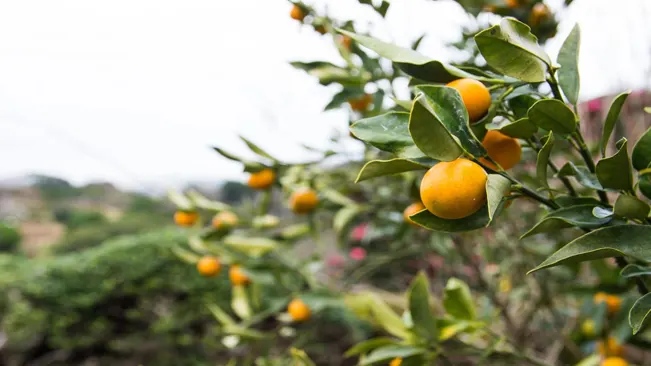
- Timing Based on Color: Initially, calamansi fruits are a deep green color. They’re fully mature when they turn a yellow-orange color. However, the exact timing can vary depending on the local climate and specific conditions of your plant.
- Taste Test: For culinary purposes, the flavor of calamansi can vary with its ripeness. Green calamansi tends to be more tart, while the yellow-orange fruits are sweeter. You can taste test a few to determine the right balance of tartness and sweetness for your needs.
- Consistent Monitoring: As the harvest time approaches, regularly check your calamansi tree. The fruits don’t all ripen at once, so you might find yourself harvesting over several weeks.
How to Harvest Calamansi
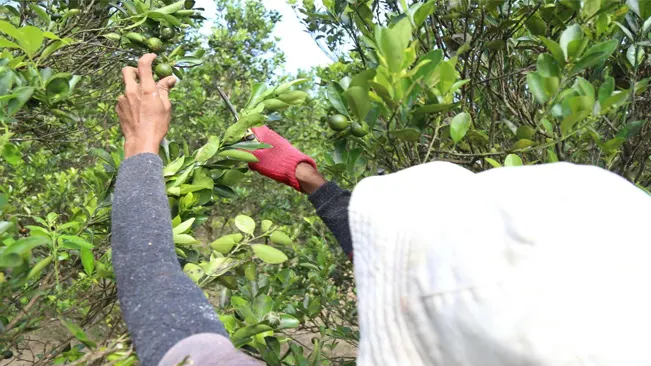
- Proper Tools: A sharp pair of garden scissors or a small pruning knife is ideal. Make sure your tool is clean to prevent any disease transmission.
- Technique: Gently hold the fruit and cut the stem close to the branch. Avoid pulling or twisting the fruit off, as this can damage both the fruit and the tree.
- Handling the Fruit: After cutting, place the calamansi gently into a basket or container. Rough handling can bruise the fruit and affect its quality.
- Regular Harvesting: Regular harvesting encourages the tree to produce more fruit. If fruits are left on the tree for too long, it may signal the tree to slow down or stop producing new fruit.
- Storage: Freshly harvested calamansi can be stored at room temperature if they will be used soon. For longer storage, refrigerate the fruits.
Additional Tips
- Peak Season: Understand when the peak calamansi season is in your area. This is when you’ll likely get the best yield.
- Overripe Fruit: Regularly remove overripe or diseased fruits from the tree. This not only makes space for new fruit but also helps prevent pests and diseases.
- Quantity: Remember, a mature calamansi tree can produce a large quantity of fruit. Plan ahead for how you’ll use, store, or share your harvest.
Uses and Benefits
Calamansi is not only a delightful addition to your garden but also to your kitchen. It’s rich in Vitamin C and can be used in a variety of dishes, drinks, and even as a natural cleaner due to its acidic properties.
Culinary Uses

- Flavoring Agent: Calamansi juice is a versatile ingredient used to add a tangy flavor to beverages, marinades, sauces, and desserts.
- Preservative: Its acidic nature helps in preserving and tenderizing food, especially in marinades.
- Beverage: Calamansi juice mixed with water and sugar makes a refreshing drink, similar to lemonade.
- Seasoning: It’s used as a condiment, often in place of lemon or lime, to add zest to dishes.
- Baking: Calamansi zest and juice can be used in cakes, pastries, and other baked goods for a unique citrus flavor.
Health Benefits

- Rich in Nutrients: Calamansi is packed with Vitamin C, essential for immune system health, skin health, and iron absorption.
- Weight Loss: It’s believed to aid in weight loss when consumed as part of a healthy diet, due to its ability to boost metabolism.
- Digestive Health: The fruit’s fiber content aids digestion and helps alleviate constipation.
- Skin Care: Applied topically, calamansi juice may help in reducing acne and brightening skin, though it’s important to be cautious as the acidity can also irritate the skin.
- Anti-inflammatory Properties: Its anti-inflammatory properties can help reduce pain and swelling, especially in conditions like arthritis.
- Oral Hygiene: Its antibacterial properties are beneficial for oral health, potentially helping to reduce bad breath.
Other Uses
- Cleaning Agent: The acidic nature of calamansi makes it useful as a natural cleaning agent, helping to remove stains and grease.
- Deodorizer: Its pleasant scent and antibacterial properties make calamansi an effective natural deodorizer.
Related Growing Guides:
Conclusion
Growing calamansi is a delightful and fulfilling endeavor. With proper care and maintenance, your calamansi tree will thrive and provide you with fresh, flavorful fruit for years to come. Remember, patience and consistency are key to successful calamansi cultivation.
FAQs (Frequently Asked Questions)
- What climate is best for growing calamansi?
- Calamansi thrives in warm, tropical to subtropical climates. It needs plenty of sunlight and a moderate amount of humidity.
- Calamansi thrives in warm, tropical to subtropical climates. It needs plenty of sunlight and a moderate amount of humidity.
- Can calamansi be grown in pots?
- Yes, calamansi can be grown in pots. Make sure to choose a large enough pot with good drainage and use well-draining soil.
- Yes, calamansi can be grown in pots. Make sure to choose a large enough pot with good drainage and use well-draining soil.
- How often should I water my calamansi tree?
- Water the calamansi tree deeply once a week, ensuring the soil is moist but not waterlogged. Adjust the frequency based on weather conditions.
- Water the calamansi tree deeply once a week, ensuring the soil is moist but not waterlogged. Adjust the frequency based on weather conditions.
- What type of soil is suitable for calamansi?
- Calamansi prefers slightly acidic, well-draining soil. You can mix in some organic matter or compost to improve soil quality.
- Calamansi prefers slightly acidic, well-draining soil. You can mix in some organic matter or compost to improve soil quality.
- How much sunlight does a calamansi tree need?
- Calamansi trees require at least 6 to 8 hours of direct sunlight daily.
- Calamansi trees require at least 6 to 8 hours of direct sunlight daily.
- When is the best time to plant calamansi?
- The best time to plant calamansi is in the spring or early summer, allowing the plant to establish itself before the cooler weather.
- The best time to plant calamansi is in the spring or early summer, allowing the plant to establish itself before the cooler weather.
- How do I fertilize a calamansi tree?
- Use a balanced, slow-release fertilizer or one specifically formulated for citrus trees. Fertilize in early spring, mid-summer, and late summer.
- Use a balanced, slow-release fertilizer or one specifically formulated for citrus trees. Fertilize in early spring, mid-summer, and late summer.
- When can I expect my calamansi to bear fruit?
- Calamansi trees typically start bearing fruit 2 to 3 years after planting, with full fruit production in 5 to 6 years.
- Calamansi trees typically start bearing fruit 2 to 3 years after planting, with full fruit production in 5 to 6 years.
- How do I prune a calamansi tree?
- Prune to remove dead or diseased branches and to shape the tree. It’s best done in late winter or early spring before new growth begins.
- Prune to remove dead or diseased branches and to shape the tree. It’s best done in late winter or early spring before new growth begins.
- Can I grow calamansi from seed?
- Yes, you can grow calamansi from seed, but it takes longer to bear fruit compared to using grafted plants. Seeds should be planted in well-draining soil and kept moist.

Emma Hudson
Forestry AuthorEmma's experience in farming shapes her detailed guides on gardening and farming tools, providing practical, actionable advice grounded in real-world experience. Her work targets both newcomers and experienced farmers, aiming to enhance their practices with a mix of traditional wisdom and modern techniques. By making complex agricultural concepts accessible, Emma's guides serve as valuable tools for those navigating the challenges of contemporary farming, offering strategies for sustainable success.













Leave your comment